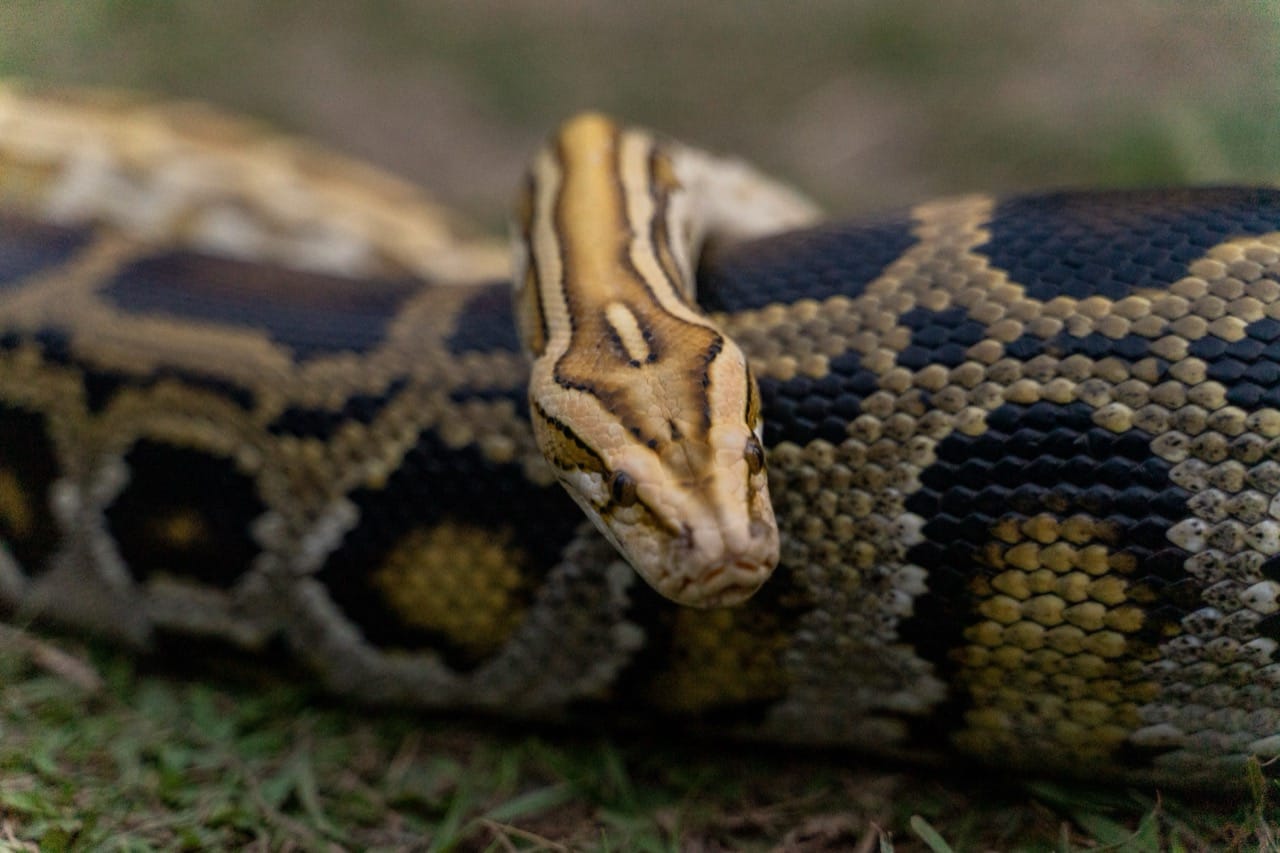The Burmese python, one of the largest species of snakes globally, evokes a mixture of awe and curiosity. With their impressive length and distinctive patterns, these pythons are not just fascinating biological specimens but also subjects of significant ecological discussions. This article explores the various aspects of the Burmese python’s life, from its physical characteristics to its interactions with humans, providing a comprehensive look at this remarkable reptile.
Characteristics / Physical Description
The Burmese python (Python bivittatus) is renowned for its incredible size. Adults can typically reach lengths of 12 to 16 feet, with exceptional individuals exceeding 18 feet. Their bodies are robust and muscular, adapted for their constricting method of predation. The skin of the Burmese python is beautifully patterned with brown blotches bordered in black on a light-colored background. These patterns help them camouflage in their natural habitats, blending seamlessly with the dense undergrowth.
Taxonomy and Classification
Classified under the order Squamata, family Pythonidae, the Burmese python is closely related to other large pythons found across Asia, Africa, and Australia. The species is one of the many members of the genus Python, which is known for its old-world constrictors. Recent taxonomic revisions continue to refine our understanding of these snakes, emphasizing the complexity of their genetic lineage.
Behavior and Social Structure
Burmese pythons are largely solitary creatures, coming together only during the breeding season. They are known for their excellent swimming abilities and can be found both on land and in water. Despite their size, they are excellent climbers in their juvenile stages, utilizing trees to escape predators or to ambush prey. The snakes are primarily nocturnal, using the cover of night to hunt and explore their territory.
Habitat and Distribution
Originally from Southeast Asia, Burmese pythons are found in a variety of habitats, including grasslands, marshes, swamps, and jungles. Their ability to adapt to different environments has contributed to their invasive status in other parts of the world, such as the Florida Everglades, where they pose a significant threat to local wildlife due to their top-predator status.
Diet and Feeding Habits
As apex predators, Burmese pythons have a varied diet, primarily feeding on birds and mammals. They employ constriction to subdue their prey, a method where the snake coils around its prey and tightens its grip to induce cardiac arrest. Juveniles may start by hunting smaller birds and rodents, gradually taking on larger animals as they grow.
Breeding and Reproduction
Burmese pythons are oviparous, laying clutches of 12 to 36 eggs. The female python exhibits an unusual behavior among snakes by coiling around the eggs and generating heat through muscular shivers to maintain a suitable incubation temperature. This maternal investment ensures a higher survival rate for the offspring.
Relationship with Humans
Humans have had a mixed relationship with Burmese pythons. While they are hunted and farmed for their skin and meat in some regions, in others, they are invasive species that disrupt local ecosystems. Their presence in non-native areas, such as Florida, has led to numerous challenges in wildlife management and conservation efforts.
Evolutionary History
The evolutionary lineage of the Burmese python traces back to the Oligocene epoch, with the family Pythonidae having ancient roots that showcase a long history of adaptation and survival. These snakes have evolved over millions of years to become the formidable predators they are today.
Ending on a note that underscores their ecological importance, Burmese pythons, like all wildlife, play a crucial role in their natural habitat. Understanding and respecting this role is key to conserving their populations and managing their impact on biodiversity.

